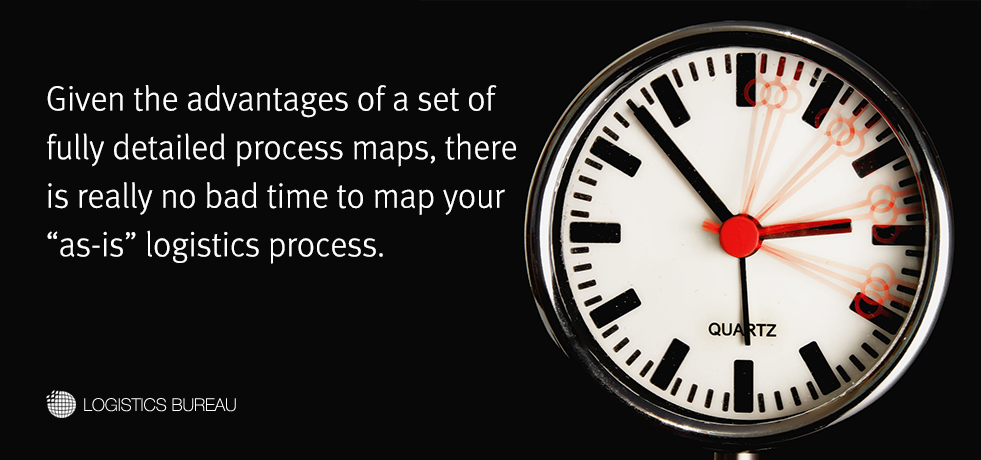If your company has ever hired a logistics consulting company (or any type of consulting firm for that matter), you may have noticed how keen their consultants are to carry out logistics process mapping at the start of a project.
Rest assured, process mapping is not simply a way to earn some extra consulting revenue. There is a very good reason why supply chain or logistics process mapping is high on the list of consultants’ priorities— and why it should be high on yours too.
Why Consultants Love Logistics Process Mapping
So why are consultants so enamoured with logistics process mapping?
It’s simply because it’s a great way to learn about your business, as well as to gain knowledge crucial in solving the problem or issue at hand.
During the time they spend mapping your processes, consultants come to understand how and why things currently work the way they do. It’s also an excellent opportunity to pinpoint possible bottlenecks and pain-points, which can then become the basis for improvement initiatives.

Why You Should Love Process Mapping Too
Logistics process mapping is a very worthwhile exercise for your company to execute, regardless of whether you use consulting help or not.
For one thing, creating and maintaining current process flow diagrams will save you some money if you should hire a consulting company in the future (since consultants can refer to your documentation instead of carrying out their own process mapping). For another … well, actually there are many other ways in which logistics process mapping can benefit your operation. For example:
- It makes process improvement projects a lot easier from the outset
- It can improve general process understanding across your organisation
- Process maps are invaluable for use in training activities, particularly when on-boarding new hires
- Process maps are also perfect for presenting key business processes to external stakeholders, suppliers, service providers, supply chain partners, and customers
When to Perform Logistics Process Mapping
Given the advantages of a set of fully detailed process maps, there is really no bad time to map your “as-is” logistics processes. However, there are some situations in which it’s especially desirable for processes to be documented in a visual format. Here are some examples of just such a scenario:
Internal Benchmarking: If you are benchmarking performance across a large logistics network, process mapping will make it easier to identify how and why some business units perform better than others. By cross-referencing KPI results with process maps for each business unit, department or function, you should be able to see what is being done differently by the top performers.
Problem Solving: It makes sense to create a process map before any troubleshooting or process improvement activity. Of course you don’t need to map out all your business processes for this purpose; just the target processes and perhaps those which lie up and downstream.
Business Solution Implementation: When implementing a new IT solution within your logistics operation, “as-is” process mapping will help your IT team (along with external consultants and solution vendors) to evaluate the suitability of different products for your business and to ensure the chosen solution is built or configured to support your processes effectively.

Maintain Your Process Maps
Logistics process mapping can be a time-consuming task, especially if you want to map accurately and in fine detail. Therefore, once a process, set of processes, or even all the processes in your part of the supply chain have been mapped, it would be a terrible shame to leave your flow-charts gathering dust in an office corner or archived on a server drive.
Try to make a point of updating existing flow-charts whenever you make physical process changes. That way you will always have current, accurate process maps to refer to. They can be used as they are for a multitude of tasks, and adapted for use in even more.
Consulting companies love process mapping, but that’s because it’s often necessary to meet clients’ objectives. If you have some current, “ready-to-digest” process flows on hand, you can save on consulting costs and get your projects off to a faster start—every time.

